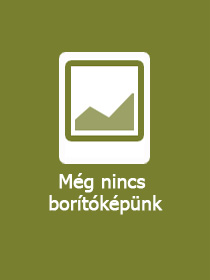
Metals as Clean Fuels
Preparation and Stabilization by One-Spot Alloying and Dealloying
Sorozatcím: Acta Materialia Book Series;
-
10% KEDVEZMÉNY?
- A kedvezmény csak az 'Értesítés a kedvenc témákról' hírlevelünk címzettjeinek rendeléseire érvényes.
- Kiadói listaár EUR 209.99
-
89 077 Ft (84 835 Ft + 5% áfa)
Az ár azért becsült, mert a rendelés pillanatában nem lehet pontosan tudni, hogy a beérkezéskor milyen lesz a forint árfolyama az adott termék eredeti devizájához képest. Ha a forint romlana, kissé többet, ha javulna, kissé kevesebbet kell majd fizetnie.
- Kedvezmény(ek) 10% (cc. 8 908 Ft off)
- Discounted price 80 169 Ft (76 352 Ft + 5% áfa)
89 077 Ft

Beszerezhetőség
Még nem jelent meg, de rendelhető. A megjelenéstől számított néhány héten belül megérkezik.
Why don't you give exact delivery time?
A beszerzés időigényét az eddigi tapasztalatokra alapozva adjuk meg. Azért becsült, mert a terméket külföldről hozzuk be, így a kiadó kiszolgálásának pillanatnyi gyorsaságától is függ. A megadottnál gyorsabb és lassabb szállítás is elképzelhető, de mindent megteszünk, hogy Ön a lehető leghamarabb jusson hozzá a termékhez.
A termék adatai:
- Kiadó Elsevier
- Megjelenés dátuma 2025. június 1.
- ISBN 9780443135378
- Kötéstípus Puhakötés
- Terjedelem420 oldal
- Méret 229x152 mm
- Nyelv angol 700
Kategóriák
Hosszú leírás:
Metals as Clean Fuels explores the innovative use of metals as a sustainable energy source. It presents a scalable selective leaching method to activate metal fuels by increasing their surface-to-volume ratio, significantly enhancing their reactivity with water for hydrogen and heat generation. This approach positions metal fuels as a superior alternative to fossil fuels, offering higher energy density and the crucial benefit of generating energy without CO2 emissions. Additionally, the book addresses key questions and working principles in its initial chapters before delving into the energy densities of various metals, from zinc to aluminum.
Chapters 8 and 9 focus on novel sustainable fabrication methods for metal/metal nanocomposites, while Chapter 10 introduces an advanced methodology for analyzing porous material systems. This monograph is a pioneering work in discussing nanostructured metals as clean fuels, with the potential to drive significant advancements in energy applications and material science research.
- Examines various methods of metal fuel activation through nanostructuring, i.e., creating nanoporous metal fuels through selective chemical and electrolytic dealloying
- Discusses a novel, versatile electrolytic method for making nanoporous metals that nearly eliminates the loss of sacrificial materials
- Includes the characterization of the fascinating intertwining of two different items in porous structures, i.e., geometry and topology
Tartalomjegyzék:
1. How Metal Fuels Work
2. Activation of Metal Fuels
3. Fundamentals of Dealloying
4. Monolithic Bulk Nanoporous Zinc by Free Corrosion Dealloying
5. Rapid Synthesis of Nanoporous Zinc in Powder Form by Free Corrosion Dealloying
6. Monolithic Bulk Nanoporous Aluminum by Air-Free Electrolytic Dealloying with Recovery of Sacrificial Materials
7. Rapid Synthesis of Nanoporous Aluminum Powder by Air-Free Electrolytic Dealloying with Recovery of Sacrificial Materials
8. Nanoporous tri-layer of similar elements by etching without sacrificing materials through the Kirkendall effect
9. Nanoporous tri-layer of dissimilar elements by etching without sacrificing materials through the Kirkendall effect
10. Porous structures and their geometric and topological characteristics





